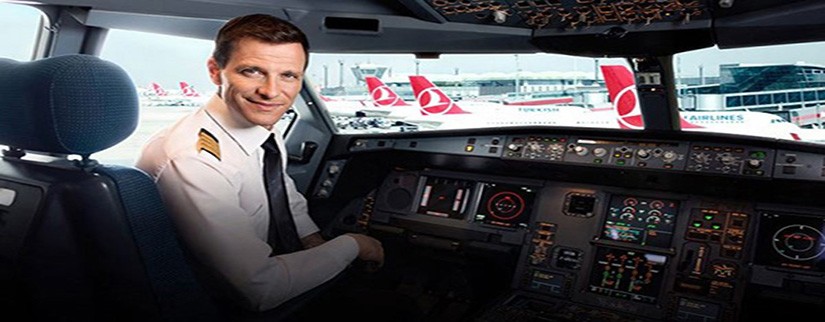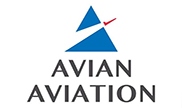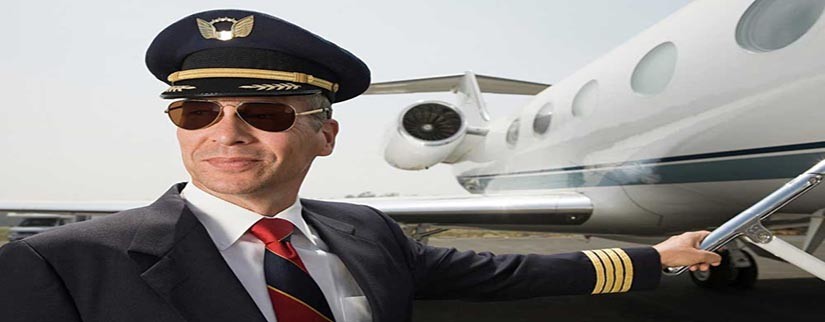
How to Become a Pilot
Why Should I Become a Pilot?
Different routes are added to airline companies' flight plans as the aviation business continues to develop. These companies, who are attempting to satisfy both these new route and market demands, are maintaining their quality and quantity growth patterns. As a result of this trend, the demand for employees in the business sector is steadily expanding, and businesses are working hard to supply this demand.
How Much Does a Pilot Earn?
Although it is widely assumed that being a pilot is desired by a big segment of the population due to benefits such as a relatively high income and social status, aviation is a complete a lifestyle.
The requirement for pilots who have incorporated aviation industry and as members of the flight crew to organize their life by the nature of their profession, both within and outside working hours, is the most significant aspect that distinguishes the aviation business from other business areas. Unlike other professions, commercial pilot professionals must manage their rest and sleep schedules according to their working schedules. Every mission is as significant as the first for even the most experienced aviator, and the importance of this issue is highlighted when considering the cost of even the smallest mistake during the task might be human life.
How to Become a Pilot?
All candidates who are interested in learning how to become a pilot and want to pursue piloting as a career should conduct thorough research into the "requirements for becoming a pilot," taking into account not only the opportunities this business line will provide, but also how the profession will affect their lifestyles and whether it is reasonable for them. They should organize their flight training after they have a positive view with no doubts in their heads at this stage.
What should I do to become a pilot?
Those who have a firm understanding of the challenges of the aviation industry and still have a strong desire to become a pilot should begin preparing for the requirements.
To satisfy the increasing need for flight crews, airline companies have begun to train pilots in the academies they have formed within their organizations, but they are unable to train enough pilots to fulfill the demand. As a result, many candidates prefer to complete their pilot training at universities or flight schools. Furthermore, the number of flight schools in Turkey has been steadily expanding since the preceding time, when it was quite low. This appears to be a positive situation, allowing Turkey's aviation industry to acquire traction and accelerate at the same time.
The next stage in selecting whether to participate in pilot training is to decide whether the training will be integrated or modular. Those who choose integrated training must finish all stages of the program in the same institution and adhere to the program's requirements. Modular training, on the other hand, allows flight candidates to complete all stages of the training at their own pace and in the institution of their choice.
As Avian Aviation personnel, we endeavor to provide you with information on what it takes to become a pilot based on our experience in the business line for you, our pilot candidates, who are chasing their dream of flying, as well as cost-cutting and time-saving alternatives. As a result, while our candidates concentrate on their training, we take care of the remaining requirements.
Our team includes of professionals with extensive experience in both aviation and training, and we continue to advise applicants interested in pilot training on how to complete quality pilot training at a reasonable rate.
What is the Modular Training for Piloting?
Our applicants who want to obtain pilot training in a modular format follow the plan outlined below.
PPL(A) – Private Pilot License Training
Candidates for the PPL license must complete 100 hours of theoretical and 45 hours of practical flight training, as well as the theory exams and control flights called Checkride, which are organized by the DGCA after the training is completed.
ATPL Theory
The ATPL (Airline Transport Pilot License) program consists of 650 hours of instruction in 14 theoretical subjects. Both the evaluation made by the flight school where the training was taken and the theoretical exams organized by the DGCA must be completed with a minimum score of 75 after taking the ATPL Theory training.
PIC – Pilot in Command Flights
It covers the 100 hours of PIC flight that candidates seeking a CPL must accomplish.
NVFR – Night VFR Rating
Before beginning their IR - Instrument flight training, candidates who wish to obtain a CPL license must complete a 5-hour practical flight training.
MEP IR – Multi-Engine Instrument Rating Training
Even if they have an IR – Instrument Rating in a single-engine aircraft, candidates who wish to work as a professional commercial pilot in airline companies must complete practical flight training, which includes multi-engine class rating and instrument flight authorizations. The DGCA check ride flight must be accomplished at the end of this training.
CPL – Commercial Pilot License Training
Candidates must spend at least 5 hours in aircraft with retractable landing gear, known to as complex aircraft, as part of their CPL training, which totally includes 15 hours of practical flight training. The DGCA check ride flight must be completed successfully at the end of this training.
How Long Does It Take To Be A Pilot?
Although it varies based on the type of training you obtained, the program your school will put up for you, and, most significantly, the candidate's performance, we can estimate that it will take 3-4 years on average.
This training is also available at universities affiliated with the Higher Education Council. In addition to conventional formal education, you can finish your flight training in four years. If you're unsure which universities offer pilot training, this link will take you to a list of universities that offer flight training.

 Türkçe
Türkçe
